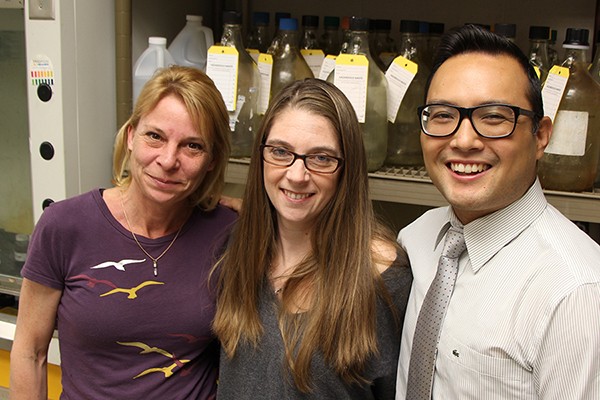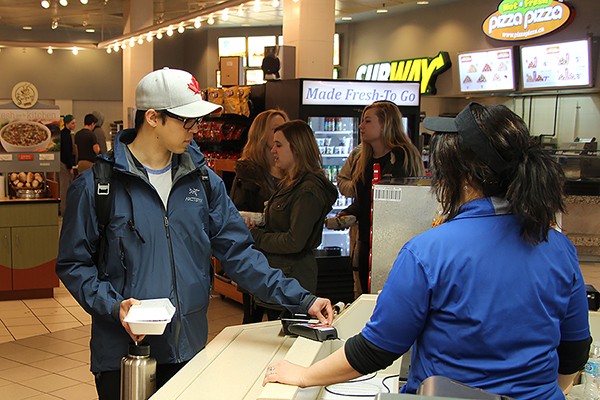 Lancer Aerosports members Ankur Joshi, Nathan Minty, Robert Racz, Kassem Bazzi, Breanna Ramirez and Viken Minassian pose with their completed model aircraft following its first test flight. Missing from the photo are teammates Quentin Minaker and Shubham Vig.
Lancer Aerosports members Ankur Joshi, Nathan Minty, Robert Racz, Kassem Bazzi, Breanna Ramirez and Viken Minassian pose with their completed model aircraft following its first test flight. Missing from the photo are teammates Quentin Minaker and Shubham Vig.
In designing its entry for the SAE Aero Design competition, a team of Windsor Engineering students concluded that optimal efficiency is not the goal.
The eight students, all mechanical engineering students pursuing the aerospace option, have created a model plane to pit against more than 70 rivals from universities as far afield as Poland, India and Egypt, in the competition, April 22 to 24 in Van Nuys, California. Each team has design a radio-controlled aircraft that must lift the largest payload and will be judged on its flight ability, an oral presentation, and a written report.
“It doesn’t matter how fast you go,” says Lancer Aerosports team captain Ankur Joshi. “It’s if you can lift the payload.”
The group’s project literally got off the ground Thursday, as it easily became airborne in its maiden test flight. The vehicle’s weight is about 6.3 kilograms; team members have calculated its potential payload at over nine kilograms.
The team made several alterations to previous Windsor designs, including a switch to an aluminum rather than wooden fuselage, and a shorter main wing that maintains its lift capacity by increasing the width to keep the same surface area.
The greatest challenge was in transferring designs from paper to reality, Joshi says: “None of us had manufacturing experience coming into the project.”
The competition is the capstone design project for the students, who all hope for careers in the aerospace industry after they graduate. First, though, they have clear the runway in California.
“We’re representing the University of Windsor on what is really a world stage,” says Joshi. “We really have an incentive to do well.”




